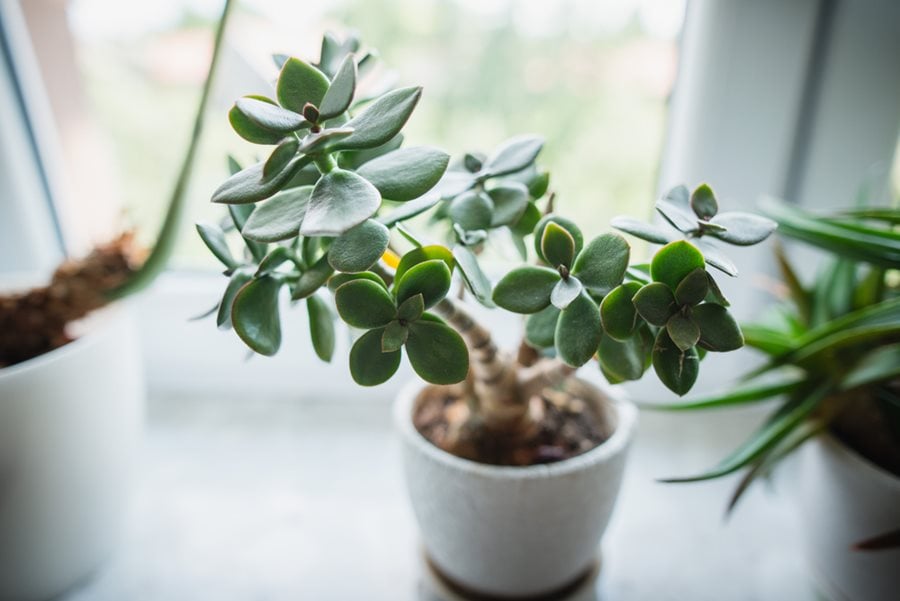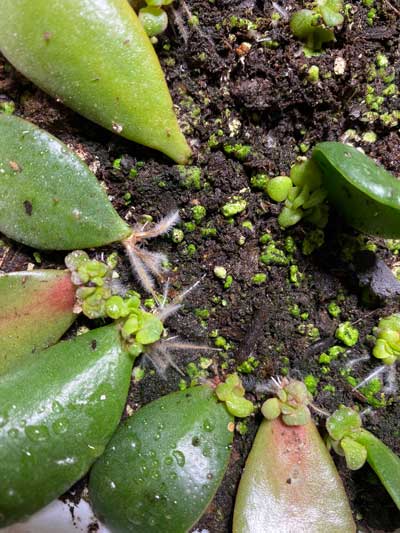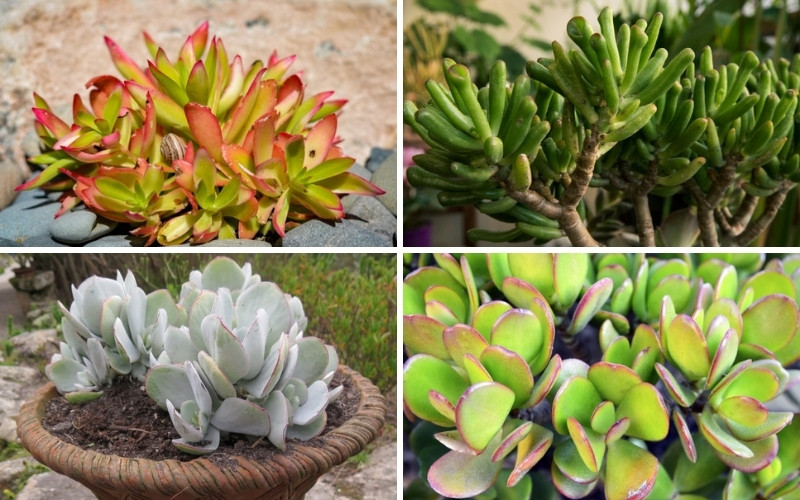Main highlights:
- Jade plant
- Tips to grow a perfect jade plant
Jade Plant is a popular succulent houseplant that is versatile enough to keep on your balcony, rooms, kitchens and garden. The tiny succulents have thick woody stems with oval-shaped leaves. These adorable stems resemble tiny tree trunks. Being a houseplant Jade is easier to grow.
The miniature gives a tree-like appearance due to the appearance of small oval-shaped leaves. This makes the plant fairly resilient and comparatively easier to grow indoors. With proper care, Jade plants are capable of living a long, long time with proper care. This makes Jade a really nice choice for decorative purposes.
When talking about suitable conditions Jade plants adapt well to warm and dry conditions. Preferably Jade requires a moderate temperature range which is found indoors. However, during the growing season, it is essential to provide the required moisture to the plant. Watering the plant is a must during the growing season
The growing season for the Jade plant is spring and summer. On the other hand, the plant remains dormant during the fall and winter. Even though during the growing periods the soil should be allowed to dry out fully in between the waterings. This should be carefully monitored otherwise the plant has a tendency to rot.


How to Plant a Jade Plant
In order to plant Jade go with a wide and sturdy pot that has a moderate depth. Here I’m especially focusing on the depth since the plant has a tendency to grow heavier on the top and then fall over. The type of soil which is required for this plant should drain thoroughly.
Jade has a tendency to rot and therefore excessive moisture content may promote fungal diseases like root rot. For the reason mentioned above, an all-purpose potting mix will work better. You can also choose to mix additional perlite to improve drainage. For example, a 2:1 ratio of potting mix to perlite is great.
Keep in mind that you must not water the Jade plant right after planting it into the soil. One should wait for several days to a week before watering. This would allow the roots to settle down and recover from any damage.
How to plant Jades from a leaf or a cutting


Since the Jade plant is succulent it is very easy to propagate from single leaves or cuttings. There are a few steps you must follow to achieve this
1. Look for a well-established Jade plant and remove a leaf or take a stem cutting. An ideal stem cutting would be at least two to three inches in length and have two pairs of leaves. After taking out the cuttings allow it to sit for several days in a warm place. This will allow the callous to form over the cut area. Thus it prevents rotting and encourages rooting.
2. Now take your pot and a well-draining potting mix. You should prefer choosing the soil that is slightly moist, but not wet. This may cause rotting.
3. Now you can start with the procedure by taking the leaf and laying it on top of the soil horizontally. Cover the cut edge with some of the soil. For the stem cuttings, place the stem upright in the soil. You can make the plant stand upright with the help of small rocks or toothpicks.
4. For the sunlight part the pot should be kept in indirect sunlight. Jade likes a warm environment with moderate heat and in this phase does not water the plant. After following these steps for a week or two, the leaf or cutting will start growing out roots.
5. In between the waterings the soil should be left to dry out. But you must keep the plant away from intense direct sunlight until it is well established.
Fertilising the Jade Plant
Jade plants do not require a very high amount of nutrients. You can occasionally offer the plant a certain amount of fertilisers. You can even use a diluted mix of standard liquid houseplant fertiliser, or a fertiliser made up of cacti and succulents.
Recommended Varieties of Jade Plant


There are many varieties of Jade plants available in the market with a wide range of colour combinations. This can range from the standard, green-leafed jade to a number of variegated varieties. Here name a few of them
Hummel’s Sunset: The succulent comes with beautiful yellow and red-tipped leaves.
Tricolour: As the name suggests the plant has leaves variegated with white and cream.
ET’s Fingers: This plant is a little odd when compared to others. ET has tube-like leaves with a red hue on the edge of the leaves.
Jade is a great choice for a houseplant, it’s low maintenance and does not require much investment when compared to other indoor plants.




